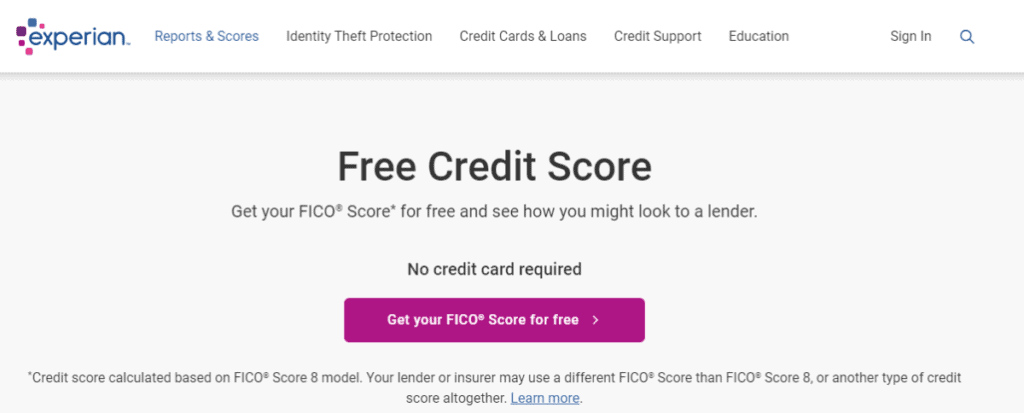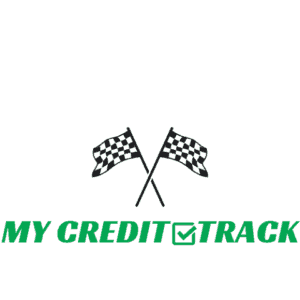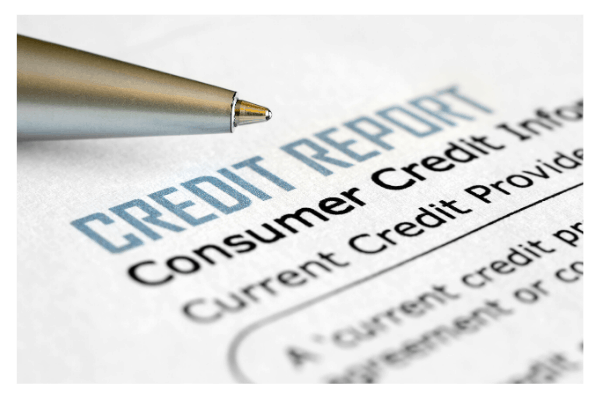According to Nerdwallet.com, the majority of Americans struggle to realize what is credit and how does it work. As a result, they tend to decrease their credit scores for insignificant reasons.
Are you sure you understand what is credit and how does it work? Or even how daily common purchases can affect your credit score?
What is Credit (Credit Explained)
Credit is the ability to borrow money for purchasing goods and services based on an agreement you have with a lender. The agreement often includes the amount of interest or fees you have to pay back and the payment timeline.
Don’t feel awkward if you’re not sure what is credit and how it exactly works though.
Asking around what is credit and how does it work is the first step towards a good credit score and enjoying the benefits of it.
What are the different types of credit?
There are 4 primary types of credit accounts:
- Revolving credit
- Installment loans
- Open credit
- Non-installment Credit
1. Revolving Credit
This type of credit allows a consumer to borrow money when he needs it using a line of credit. A consumer can often borrow up to a fixed limit. Once he repaid it, he can borrow the same amount again.
The most well-known kind of revolving credit is credit cards. Revolving credit doesn’t have a predetermined repayment period (in the opposite of installment loans). If you don’t have any debt left to pay. you don’t have to make any payments.
The advantage of revolving credit is that you can control how much money you want to borrow monthly.
On the other side, you may end up paying interest and fees if you don’t borrow responsibly and you don’t pay off your debt consistently.
2. Installment credit/loans
The majority of installment loans let you borrow a large amount of money upfront. Then you have to repay it with regular installments over a set period of time including interest and fees.
The repayment period can vary from a few months to even decades. Some popular examples of installment loans are student loans, mortgages, auto loans & personal loans.
3. Open Credit
This kind of credit accounts doesn’t have a preset credit limit. However, you have to pay the full balance each month or at the end of the billing period to keep your account open.
Charge cards are the most common type of open credit accounts. Currently, American Express is the most popular issuer of charge cards.
4. Non-installment Credit
It’s the most straightforward form of credit. Using this model, you have to repay debt with a lump sum amount by a specific date. The repayment period is usually small (fewer than 30 days) and the interest can become very high if you don’t pay on time.
What is a Credit Score and What is a Credit Report?
To make sure you’re a responsible credit user, you have to take two major aspects into account:
- Credit Score
- Credit Report
What is Credit Score and How Does Credit Score Work?
Your Credit Score is a 3-digit number that represents your ability as a borrower to repay debt.
It’s important to keep your credit score high because a low score can lead to a higher interest rate and fees.
There’s not only one credit score, because there are different credit scoring models. The two most popular scoring models are FICO and VantageScore:
| VantageScore | FICO | Credit Rating |
| 300-499 | 300-579 | very poor |
| 500-600 | 580-669 | poor |
| 601-660 | 670-739 | fair |
| 661-780 | 740-779 | good |
| 781-850 | 800-850 | excellent |
How is My Credit Score Calculated?
The FICO score depends on 5 different factors:
- Payment History – 35%: It represents your ability to make payments before the end of the billing period. Also, it shows the avoidance of collection or delinquent accounts.
- Amount owned – 30%: It shows the amount you owe in total and as well as your credit utilization ratio (the percentage of credit you’re using on each card and across all your credit accounts.)
- Credit history’s length – 15%: This factor indicates how long you’re a credit user and the average age of your credit accounts.
- Credit mix – 10%: This element includes all kinds of credit accounts you’re using like student loans, mortgages or credit cards. The “Credit mix” can not alter much your credit score, unless you have not enough information from your other credit scoring factors.
- New credit – 10%: When you apply for new credit, usually the creditor adds a hard inquiry on your credit report. This can deduct a few credit points from your score. Applying for many credit accounts in a short period of time can trigger a red flag for your lenders.
The scoring model of VantageScore takes into account the same factors but it weights them differently. Thus, these two scoring model (VantageScore & FICO) may often look similar but not identical.
How Do I Check My Credit Score?
Note that the credit reports you can obtain from the three below-mentioned worldwide reporting agencies don’t include your credit score.
However, there are other ways to check your credit scores like:
- Your credit card issuer/lender: Many banks, loans and credit card companies provide credit scores to their customers. They may mention in on your statements or you can check it online if you log into your profile/account.
- Credit scoring websites: There are many different websites that can show your credit score. The majority of them are free but some of them require a low monthly fee (and provide score monitoring too). Also, most of these websites require you to sign up, so pay attention to their terms (for example, some sites offer educational scores). You can get your FICO credit score for free through Experian, but you’ll have to sign up for a free account first.
- Through a nonprofit credit counselor: They can probably show you your credit score and other details for free. The best way to find one is by visiting the “National Foundation for Credit Counseling”
- Purchase your credit score directly through one of the three worldwide credit bureaus (Experian, Equifax, TransUnion) or a credit score provider like FICO.

Why Is It Important to Have a High Credit Score?
The higher your credit score, the lower amount you’ll pay on interest rates and fees throughout your life.
If you manage to keep your credit score high you’ll have some advantages such as:
- It will be easier and faster for you to get approval for a credit card or loan
- Lower interest on loans and credit cards
- Negotiating Power (you’ll get better offers from banks or you can negotiate better interest rates)
- Cheaper Car Insurance rates
- Higher credit limits
- Easier/Faster approval for rental apartments or houses
- Avoidance of Utilities’ security deposits
What Are The Disadvantages of Having a Low Credit Score?
Obviously, a low credit score triggers the opposite of the above-mentioned effects. You’ll probably pay higher interest rates, fees, or insurance premiums and it will be more difficult to get approval for credit/loan requests.
Further, it will be tougher for you to get approved for rental apartments and it may be even more difficult to land a job (especially if you have bankrupted).
At first, paying 1% or 2% more interest may not sound like a big deal. But if you think it better, you’ll end up paying thousands of dollars more in your lifetime (compared to a high credit score).
What is Credit Report?
A credit report represents your past & current financial obligations. Potential lenders check your credit report to determine how responsible borrowers you are to approve a loan.
There are three different worldwide credit reporting agencies that provide credit reports: TransUnion, Equifax & Experian.
Note that creditors don’t have the legal obligation to report your financial details. This way, the financial agencies provide information that your lenders have reported.
Thus, a credit report may not display information that your creditors have not provided to a specific credit reporting agency.
However, this doesn’t happen often because creditors almost always report consumers’ information to the national credit reporting bureaus.
Your credit report includes information like:
- The dates you opened your accounts
- Payment history
- Current balances
- Loan amounts
- Public records: your reports may include information such as bankruptcies and repossessions
- Inquiries: soft inquires (they trigger when someone checks your credit report without affecting your credit score) and hard inquires (they trigger when you apply for new credit)
- Personal information: your names, current and past addresses
Also read: “How to Read and Analyze Your Credit Reports For Errors”
How Can I Access My Credit Report?
The Federal Government has authorized AnnualCreditReport.com to provide consumers free credit reports. You can claim it for free once a year from any three above-mentioned national credit bureaus.
Note that due to COVID-19, the credit agencies provide free weekly online reports. As stated on AnnualCreditReport.com, Experian, TransUnion and Equifax are currently providing free online reports every week until April 2021.
Remember that is a good practice to check your credit report at least once every 12 months. It’s free and you can find costly mistakes like open payments that should be closed or misspelled information.
Further, checking your credit report is a habit that can help you understand better your behavior as a borrower. It can also help you improve your ability to manage credit and payments.
What is Credit & How Does Credit Work Summary
No matter what kind of credit you’re using, there are two major aspects you should know about (your credit score and your credit reports).
Fortunately, you can obtain them both for free. It’s crucial to check them regularly so you can better handle credit, realize your weak points as a credit user and understand how credit actually works.
This way, you can be more responsible as a borrower and enjoy the benefits of a good credit score than suffering the downside of a low score.
What is Credit and How Does it Work FAQ
Credit is the ability to borrow money from a lender under an agreement that requires the borrower to repay the debt at a later date including interest.
There are four types of credit:
1. Installment credit
2. Non-installment credit
3. Revolving credit
4. Charge cards
You’ll need to have at least a credit score of 620 for conventional loans. A credit score of 720 and above lets you qualify for the best interest rates on a mortgage. However, you can qualify with a lower credit score using USDA, VA and FHA loans.
Some good examples of credit cards for beginners are:
1. OpenSky® Secured Visa® Credit Card
2. Journey® Student Rewards from Capital One®
3. Capital One® Secured Mastercard®
4. Capital One® Platinum Credit Card
5. Capital One® QuicksilverOne® Cash Rewards Credit Card



